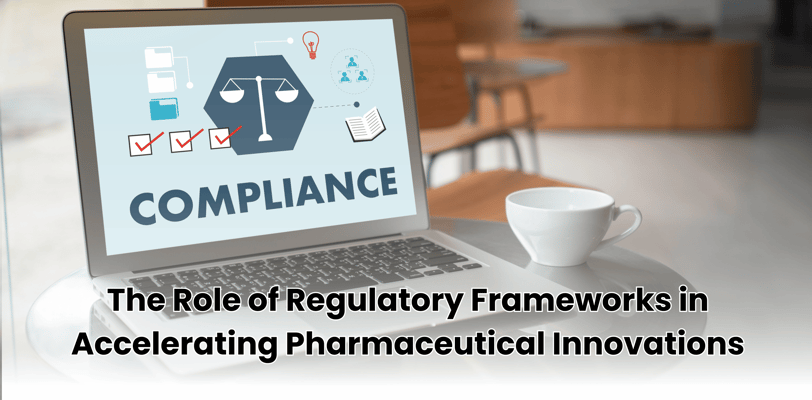The Role of Regulatory Frameworks in Accelerating Pharmaceutical Innovations
The pharmaceutical industry stands at the intersection of innovation and regulation, where breakthroughs in research can save lives, but the path from discovery to delivery is often complex and arduous. Regulatory frameworks play a critical role in this journey, balancing the need for safety and efficacy with the urgency to bring new therapies to market. As pharmaceutical research and development (R&D) evolve rapidly, so must the regulatory mechanisms that oversee them. This blog explores how regulatory bodies can adapt to support the acceleration of pharmaceutical innovations.
1/17/20252 min read


The Importance of Regulatory Frameworks
Regulatory frameworks are essential to ensure that pharmaceutical products meet stringent standards of quality, safety, and efficacy. They protect public health by preventing harmful or ineffective drugs from reaching the market. However, these frameworks can also introduce bottlenecks, particularly when they fail to keep pace with scientific advancements. Addressing these challenges requires a proactive and flexible approach from regulatory agencies.
Challenges in the Current Regulatory Landscape
Lengthy Approval Timelines: Traditional approval processes can take years, delaying the availability of potentially life-saving drugs.
Complexity of New Therapies: Innovations such as gene therapies, personalized medicine, and mRNA vaccines often involve novel mechanisms of action, which current frameworks may not be fully equipped to evaluate.
Global Disparities: Differences in regulatory requirements across countries can complicate the global launch of new pharmaceuticals.
Resource Constraints: Regulatory agencies often face limited resources, which can slow down the review process.
Strategies for Adapting Regulatory Frameworks
Implementing Adaptive Pathways Adaptive pathways allow for the conditional approval of drugs based on preliminary evidence, with ongoing data collection to confirm long-term safety and efficacy. This approach enables patients to access promising therapies sooner while maintaining robust oversight.
Enhancing Collaboration Increased collaboration between regulatory bodies, academia, and industry can streamline the drug development process. Initiatives like the International Council for Harmonisation (ICH) promote global standards, reducing duplication of efforts and fostering innovation.
Leveraging Real-World Evidence (RWE) Real-world data from electronic health records, patient registries, and wearable devices can complement clinical trial findings, providing a more comprehensive understanding of a drug's performance in diverse populations.
Embracing Digital Tools Artificial intelligence (AI) and machine learning (ML) can enhance the efficiency of regulatory reviews. These technologies can analyze vast datasets, predict outcomes, and identify potential safety concerns faster than traditional methods.
Developing Specialized Guidelines Regulatory agencies can issue tailored guidelines for emerging fields like cell and gene therapies, addressing unique challenges and reducing uncertainty for developers.
Fostering Early Engagement Early and ongoing communication between regulators and developers can clarify expectations, identify potential hurdles, and expedite the approval process.
Case Studies of Successful Adaptations
Emergency Use Authorizations (EUAs): The rapid approval of COVID-19 vaccines under EUAs demonstrated the potential for regulatory flexibility without compromising safety standards.
Priority Review Programs: The U.S. Food and Drug Administration (FDA) and European Medicines Agency (EMA) have implemented priority review and accelerated approval programs to fast-track critical therapies.
Regulatory Sandboxes: Countries like the UK have introduced regulatory sandboxes, allowing developers to test innovative products in a controlled environment with reduced regulatory burdens.
The Road Ahead
As the pharmaceutical landscape continues to evolve, regulatory frameworks must embrace innovation without compromising their primary mission of protecting public health. By adopting adaptive pathways, fostering collaboration, and leveraging technology, regulatory bodies can play a pivotal role in accelerating pharmaceutical advancements. These efforts will not only benefit patients but also strengthen the industry's ability to address future health challenges.
Conclusion
The delicate balance between innovation and regulation is crucial for the future of medicine. Regulatory frameworks that are flexible, collaborative, and forward-thinking can transform the pharmaceutical industry, ensuring that groundbreaking therapies reach those who need them most. By embracing change and innovation, regulatory bodies can help unlock the full potential of pharmaceutical R&D, ushering in a new era of healthcare advancements.
